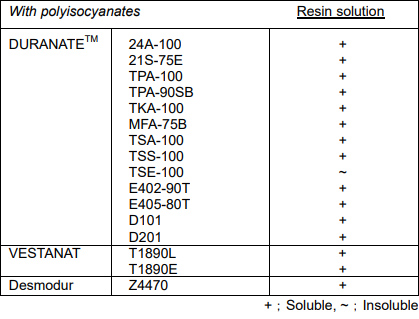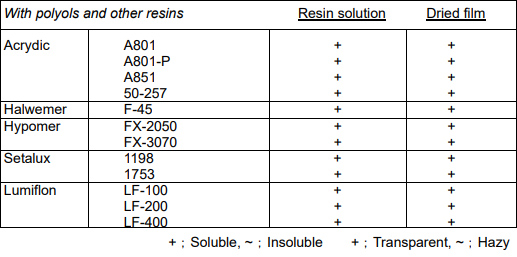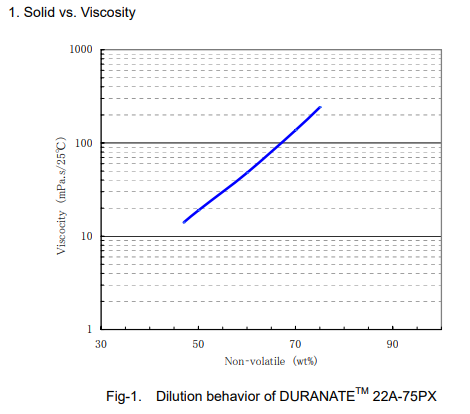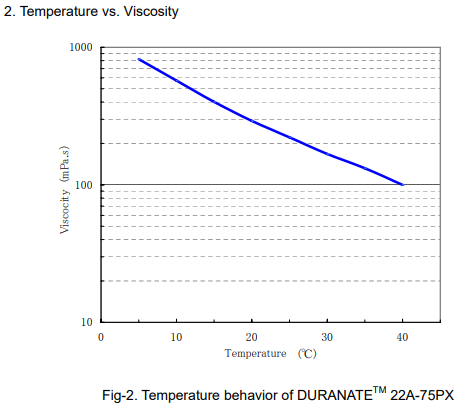HDI Diourea Covesro N75
ABOUT:
Aliphatic polyisocyanate (HDI biuret).As the hardener component for lightfast polyurethane coating systems.
Product Types:
-
HDI
-
PIC
-
Aliphatic polyisocyanate
-
Crosslinkers
-
Polyisocyanate
-
Hardeners
-
Polyisocyanurate
-
Isocyanate
Material:
Coatings, paints & inks:High functional, Weather resistant, Low viscous, Solventborne
General Characterization:
Aliphatic polyisocyanate (HDI biuret).
As the hardener component for lightfast polyurethane coating systems.
Characteristics:
Property Name |
Test Method |
Unit |
Value |
Equivalent weight |
approx. 255 |
||
Viscosity at 25 °C |
M014-ISO 3219/A.3 |
mPa*s |
approx. 140 |
Flash point |
DIN 53 213/1 |
°C |
approx. 35 |
Density at 20 °C |
DIN EN ISO 2811 |
g/ml |
approx. 1.07 |
Specifications:
Property Name |
Test Method |
Unit |
Value |
Viscosity at 23 °C |
M014-ISO 3219/A.3 |
mPa*s |
160 ± 50 |
NCO content |
M105-ISO 11909 |
% |
16.5 ± 0.3 |
Color value (Hazen) |
M017-EN 1557 |
≤ 40 |
|
Non-volatile content (2.2 g/120 min/100 °C) |
M020-ISO 3251 |
% |
75 ± 1 |
Monomeric HDI |
M106-ISO 10283 |
% |
< 0.38 |















